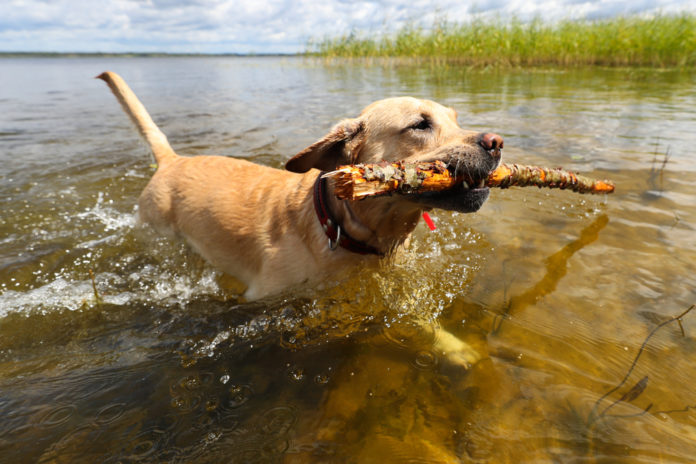AUBURN, Ala. – Blue-green algae has caused several cases of dog poisonings and deaths across the country. While poisonings from these algae are nothing new, in recent years problems have been worse. These reports have many pet owners wanting to know more about these toxic algae.
Blue-green algae
While it is known as blue-green algae, cyanobacteria is actually a more accurate term. Cyanobacteria is a widespread group of photosynthetic micro-organisms that are technically not algae. Rusty Wright, an Alabama Extension specialist, said these algae are found in a variety of places.
“The species that are causing a lot of the problems we’ve been hearing about lately are freshwater species in ponds,” Wright said. “Cyanobacteria can grow on surfaces, as filaments (either attached to the bottom or floating), as single-celled plankton or as colonies.”
Some of these types can produce toxins that may be quite potent. The ones that cause most of the problems with livestock and pets are free-floating plankton types.
“There are many other types of cyanobacteria; some produce toxins and some do not,” said Wright, who is also a professor in the Auburn University school of fisheries. “What can make testing a real problem is the types that make toxins, may not make them all the time. The algal bloom may test negative for the toxin one day, then positive the next.”
Alan Wilson, an Auburn University professor in the school of fisheries, aquaculture and aquatic sciences, said there are many factors that lead to the production of these toxins.
“Toxin production in blue-green algae can be caused by the life cycle of the organism or by changes in environmental factors, such as temperature, available nutrients, salinity or interactions with other organisms,” Wilson said. “For example, when blue-green algae die, they rupture allowing their internal contents, including toxins, to enter surrounding water.”
Therefore, in order for a body of water to have a toxic blue-green algal bloom, there must be abundance of toxigenic blue-green algae that are producing toxins.
Harmful toxins
Depending on the species, cyanobacteria can produce a range of toxins, all with different reactions and symptoms.
“One of the filamentous cyanobacteria Lyngbya sp. can cause skin irritation and asthma like reactions,” Wright said. “Others can produce hepatotoxins (liver damaging) or neurotoxins (nerve damaging).”
Algae that produces neurotoxins cause the most immediate reaction. They can cause brain damage and interfere with the heart and lungs, making them quite lethal. Hepatotoxins are more common and are probably more responsible for the deaths of pets.
Dogs are particularly susceptible to poisonings because typically, the highest levels of concentration of these toxins are in the surface bloom where dogs swim.
“When the dog leaves the water, they usually shake the water off, then lick themselves clean,” Wright said. “In this cleaning process, the dog ingests a concentrated dose of the toxins.”
What to look for
Identifying blue-green algae by sight is largely impossible. However, if a pond has a thick surface bloom or scum, it would likely be a cyanobacteria bloom. Water with the algae can be a range of colors, including bright green, blue, almost florescent blue-green and even red. Sometimes a body of water will not have a thick surface bloom and just have green colored water.
“Seeing dead fish or other animals around a pond edge is not sufficient evidence to say there are toxic algae,” Wright said. “Not seeing dead organisms is also not enough evidence to indicate that the water is safe.”
Protect pets
To protect pets, a good general rule is do not let them drink or swim in ponds where there is a surface algal bloom. If you do plan to let them swim in a green pond, bring some tap water to rinse the dog off when they leave the water. If a dog shows any symptoms of being ill after swimming, take them immediately to a veterinarian clinic.
More information
For more information on blue-green algae, visit www.aces.edu or contact your county Extension office.






























